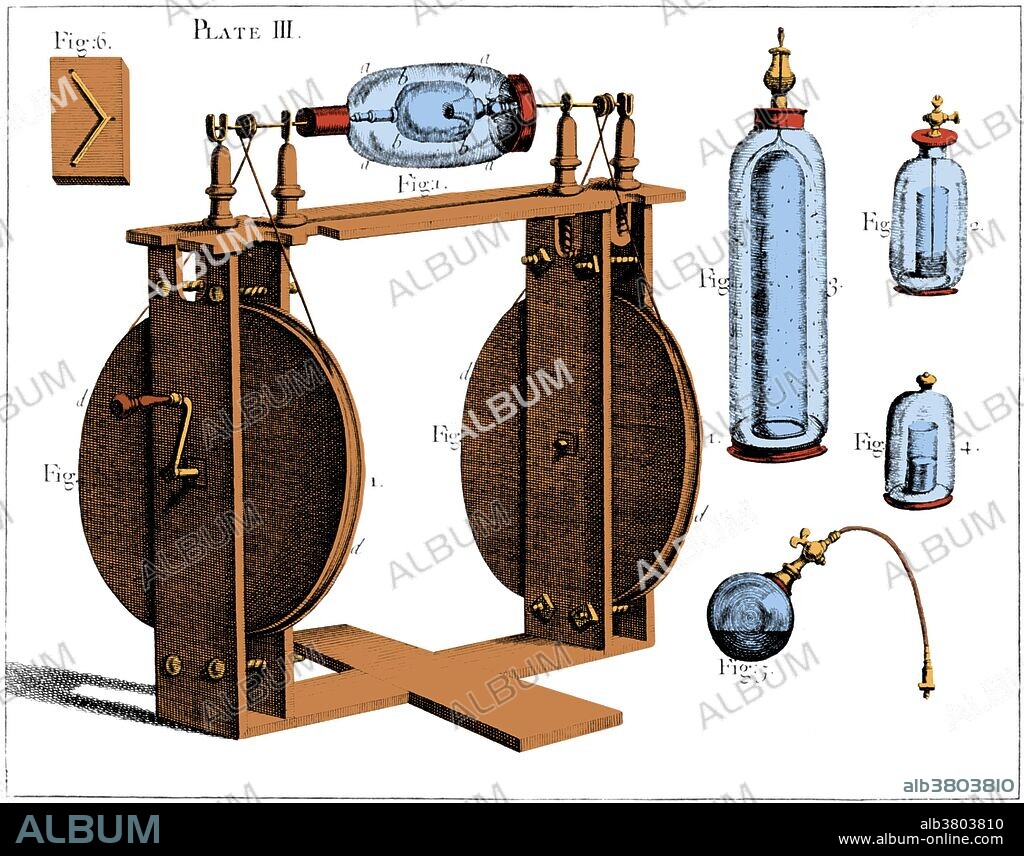alb3803810
Hauksbee Electrical Machine, 18th Century

|
Ajouter à une autre Lightbox |
|
Ajouter à une autre Lightbox |



Avez-vous déjà un compte? S'identifier
Vous n'avez pas de compte ? S'inscrire
Acheter cette image

Titre:
Hauksbee Electrical Machine, 18th Century
Légende:
Voir la traduction automatique
Hauksbee's electrical machines in which two glass vessels were independently rotated, one within the other. A dry hand applied o the outer revolving vessel produced a glow in the inner one. Turning both in a common or in opposite directions gave a more brilliant light. Francis Hauksbee the Elder (1660-1713) was an English scientist. In 1705 Hauksbee discovered that if he placed a small amount of mercury in the glass of his modified version of von Guericke's generator, evacuated the air from it to create a mild vacuum and rubbed the ball in order to build up a charge, a glow was visible if he placed his hand on the outside of the ball. The glow was bright enough to read by. This effect became the basis of the gas-discharge lamp, which led to neon lighting and mercury vapor lamps. In 1706 he produced an "Influence machine" to generate this effect. In 1709 he published Physico-Mechanical Experiments on Various Subjects which summarized much of his scientific work. This image has been color enhanced.
Crédit:
Album / Science Source / New York Public Library
Autorisations:
Modèle: Non - Propriété: Non
Questions sur les droits?
Questions sur les droits?
Taille de l'image:
4200 x 3292 px | 39.6 MB
Taille d'impression:
35.6 x 27.9 cm | 14.0 x 11.0 in (300 dpi)
Mots clés:
 Pinterest
Pinterest Twitter
Twitter Facebook
Facebook Copier le lien
Copier le lien Email
Email
